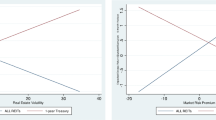Abstract
Balloon loans have become increasingly popular in recent years. For this reason, it is important to understand their features, assess their potential risks, and monitor their early performance. This article focuses on these topics. The first section discusses balloon characteristics and mortgage choice. The second section discusses expected balloon performance. The third section provides an econometric model for monitoring current performance. The fourth and fifth sections describe the data and results, respectively. The final section summarizes the article and offers some concluding remarks. The fundamental conclusions are that (1) early balloon performance is slightly worse than expected (i.e., balloons are not matching fixed-rate performance prior to balloon reset dates); (2) balloon performance is, however, within the range expected over the full term of the loans (i.e., performance worse than fixed-rate performance, but better than ARM performance); and (3) balloons have important characteristics that help mitigate systematic risk.
Similar content being viewed by others
References
Amemiya, Takeshi. (1985).Advanced Econometrics. Cambridge, MA: Harvard University Press.
Brueckner, Jan K., and James R. Follain. (1988). “The Rise and Fall of the ARM: An Fxonometric Analysis of Mortgage Choice,”Review of Economics and Statistics 70 (February), 93–102.
Brueckner, Jan K., and James R. Follain. (1986/1987). “Tracking ARMs,”Secondary Mortgage Markets (Winter), 2–7.
Campbell, Tim S., and J. Kimball Dietrich. (1983). “The Determinants of Default on Insured Conventional Residential Mortgage Loans,”Journal of Finance (December), 1569–1581.
Cosslett, S.R. (1981). “Efficient Estimation of Discrete Choice Models.” In C.F. Manski and D. McFadden (eds.),Structural Analysis of Discrete Data with Economic Applications. Cambridge, MA: MIT Press, p. 84.
Cunningham, Donald F., and Charles A. Capone. (1990). “The Relative Termination Experience of Adjustable to Fixed Rate Mortgages,”Journal of Finance (December), 1687–1703.
de Leeuw, Frank, and Thomas M. Holloway. (1985). “The Measurement and Significance of the Cyclically Adjusted Budget,”Journal of Money, Credit, and Banking 17 (May), 233–242.
Foster, Chester, and Robert Van Order. (1984). “An Option Based Model of Mortgage Default,”Housing Finance Review 3 (October), 373–392.
Holloway, Thomas M. (1991). “The Role of Homeownership and Home Price Appreciation in the Accumulation and Distribution of Household Sector Wealth,”Business Economics 26 (April), 38–44.
Godfrey, L.G. (1988).Misspecification Tests in Econometrics. Cambridge, UK: Cambridge University Press.
Jacobe, Dennis J., J. Noel Fahey, Michael L. Wilson, and Dennis L. Klaeser.Mortgage Borrowers: Adjusting to Changing Times. Chicago: U.S. League of Savings Institutions.
Maddala, G.S. (1983).Limited-Dependent and Qualitative Variables in Econometrics. Cambridge, UK: Cambridge University Press.
Mankiw, N. Gregory, and David N. Weil. (1988). “The Baby Boom, The Baby Bust, and The Housing Market.” NBER Working Paper No. 2794, December.
Olson, Nancy, and Mark Steinman. (1992). “Balloon Mortgages: Inflating Credit Risk,”Standard & Poors' Credit Comments (February), 7–8.
Nothaft, Frank E., and George H.K. Wang. (1992). “Determinants of the ARM Share of National and Regional Lending,”Journal of Real Estate Finance and Economics 5, 219–234.
Palash, Carl J., and Robert B. Stoddard. (1985). “ARMs: Their Financing Rate and Impact on Housing,”Federal Reserve Bank of New York Quarterly Review (Autumn), 39–49.
Peach, Richard W., and Thomas M. Holloway. (1988). “Market Share: Lower but Steady,”Mortgage Banking 48 (Auguest), 69–70.
Vandell, Kerry D., and Thomas Thibodeau. (1985). “Estimation of Mortgage Defaults Using Disaggregate Loan History Data,”Journal of the American Real Estate and Urban Economics Association 13 (Fall), 292–316.
Zorn, Peter M., and Michael Lea. (1989). “Mortgage Borrower Repayment Behavior: A Microeconomic Analysis with Canadian Adjustable Rate Mortgage Data,”Journal of the American Real Estate and Urban Economics Association 17 (Spring), 118–136.
Author information
Authors and Affiliations
Rights and permissions
About this article
Cite this article
Macdonald, G.D., Holloway, T.M. Early evidence on balloon performance. J Real Estate Finan Econ 12, 279–293 (1996). https://doi.org/10.1007/BF00127538
Issue Date:
DOI: https://doi.org/10.1007/BF00127538




